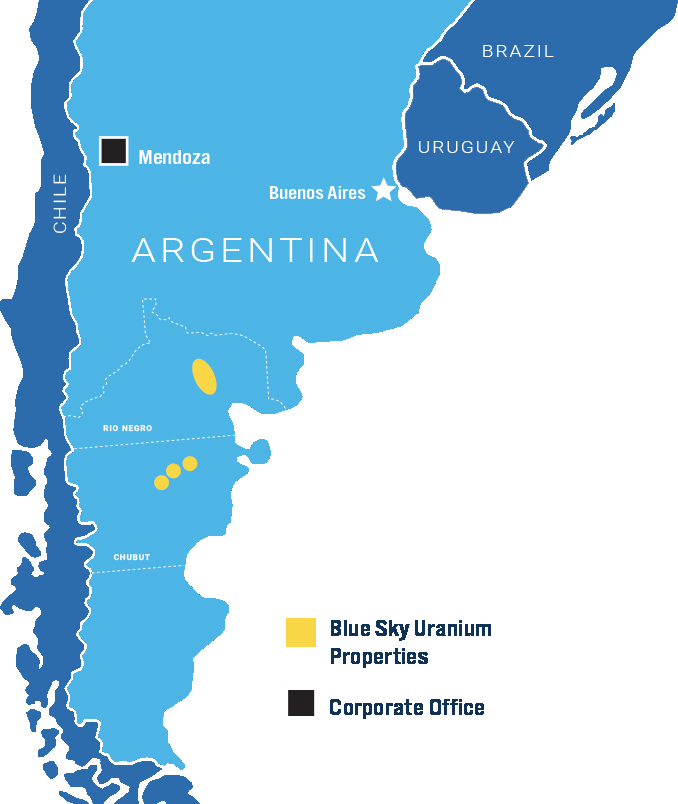Uranium fundamentals positive for clean baseload power

By David Duval
The long-term fundamentals for the uranium market remain positive given the growing trend towards electrification supported by growth in baseload power supply, the switch to reliable fossil fuel alternatives, and the electrification of transportation.
Today, more countries than ever are making Net Zero commitments including the U.S. which has also expressed support for its nuclear industry including the construction of new advanced reactors.
“From a policy point of view, there is recognition that nuclear will be needed in the toolbox to sustainably achieve both electrification and decarbonization,” notes Tim Gitzel, president and CEO of Cameco Corp. [CCO-TSX; CCJ-NYSE], one of the largest global providers of fuel for nuclear reactors. Nuclear power emits nearly 70 times less carbon dioxide than coal, making it significantly less carbon intensive than fossil fuels.
Significant investments are also being made in small nuclear reactors, partly due to the high capital cost of large power reactors and partly due to the need to service small electricity grids. Economies of scale are envisaged for these small reactors based on the numbers produced. There are also moves to develop independent small units for remote sites which are seen as a much more manageable investment than larger ones whose cost often rivals the capitalization of the utilities concerned.
At the present time, nuclear power provides about 10% of the world’s electricity from about 440 power reactors, most of which are fueled with uranium dioxide. Nuclear is the world’s second largest source of low-carbon power, accounting for 29% of the total in 2018. In fact, France derives about 70% of its electricity from nuclear energy and it’s the world’s largest net exporter of electricity due to its very low cost of generation. In 2018, exports were principally to Italy, Spain, the UK, Germany, Switzerland and Luxembourg.
Mine closures in Canada and a reduction in production in Kazakhstan pushed prices for the nuclear fuel to a four year high of US$33.93/lb in May of 2020 and it appears destined to move significantly higher in the mid to long term with about 50 more reactors under construction, equivalent to approximately 15% of existing capacity.
The uranium spot price has held firmly at around US$29/lb since September of 2020 in the face of rampant global disruptions and production issues. Despite being US$21 short of the US$50 threshold often cited as the level that will incentivize projects, the U3O8 spot price was 37% higher from its January low to its 2020 May high.
The World Nuclear Association points out that civil nuclear power now boasts more than 18,000 reactor years of experience, and nuclear power plants are operational in 31 countries worldwide. In fact, through regional transmission grids many more countries depend in part on nuclear-generated power. For example, Italy and Denmark get almost 10% of their electricity from imported nuclear power.
China is expected to be a major source of uranium demand in the future as electricity usage from nuclear power climbs steadily, increasing from 2% to 5% between 2009 and 2019. The country is also ahead on its mission to reduce fossil fuel emissions, with a 2060 goal of reaching carbon neutrality.
Of the 53 nuclear reactors currently under construction globally, China leads the way with 16, followed by India with six. Nuclear power demand in the Asian region is the highest in the world, accounting for about 60% of the new reactors under construction.
Nuclear power plants do not cause air pollution while in operation, and can bring massive power supply on line compared to standard wind and solar projects. Nuclear’s output capacity is around 2.5 to 3.5 times more than a typical wind or solar projects. For populous, fast-growing countries like China and India that also suffer from devastating pollution, nuclear is a critical energy source. US government studies indicate that a typical nuclear reactor can produce as much power as either 431 utility scale wind turbines or 3.1 million solar panels.
According to Cameco, “Global population is on the rise, and there is a growing focus on electrification and decarbonization. With demand increasing due to restarts and new reactors, and supply becoming less certain as a result of low prices, production curtailments, lack of investment, and end of reserve life, unplanned production disruptions, shrinking secondary supplies and trade policy issues, we’re continuing to expect a market transition.”
The world’s largest uranium mine, Cameco’s Cigar Lake project in Saskatchewan, remains closed and the world’s largest uranium producer, Kazatomprom, has pledged to extend its 20% production cuts through 2022, shifting the market dynamics to support higher prices.
Just like other commodities, the uranium industry is cyclical with consumers purchasing uranium under contract when prices are rising. This contracting feature drives investment in higher-cost sources of production which impacts the market longer than is economically rational. The opposite holds true when prices are declining: consumers have no urgency to enter into long term contracts and higher cost production, in some cases, are forced to exit the market.
After years of low investment in supply – as has been the case since 2011 – security of supply tends to overtake price concerns and utilities re-enter the long-term market to ensure they have a reliable supply of uranium for their reactors. In fact, recent data from the US Energy Information Administration shows that utility inventories are starting to decline and are approaching levels that could put security of supply at risk
“Ultimately, we expect the current market uncertainty to give way to increasing concerns about the security of future supply,” says Cameco.
 Blue Sky Uranium Corp. [BSK-TSXV; BKUCF-OTCQB; MAL2-FSE] is a leader in uranium discovery. Its objective is to deliver exceptional returns to shareholders by rapidly advancing a portfolio of surficial uranium deposits into low-cost producers
Blue Sky Uranium Corp. [BSK-TSXV; BKUCF-OTCQB; MAL2-FSE] is a leader in uranium discovery. Its objective is to deliver exceptional returns to shareholders by rapidly advancing a portfolio of surficial uranium deposits into low-cost producers
In keeping with that plan, the company recently launched a reverse circulation drilling program at its wholly-owned Amarillo Grande uranium-vanadium project in Rio Negro Province, Argentina.
“The persistent strong outlook for uranium provides a supportive environment for our work, and we look forward to continued success that will build additional value at Amarillo Grande,” said Blue Sky President and CEO Nikolaos Cacos.
One of the company’s key goals is to produce uranium in Argentina, a South American country that currently lacks the domestic production to support the expansion of its nuclear energy sector. The company also offers investors a window on vanadium, a strategic metal in the United States that has applications in both steel and battery production.

Blue Sky’s exploration and development strategy is led by a highly experienced management team that includes Chairman and founder Joe Grosso, who has been active in Argentina since the country opened its mining sector to foreign investment in 1993.
Using his experience and connections, Blue Sky discovered a new uranium district in Rio Negro Province in the Patagonia region of southern Argentina. The 100%-owned Amarillo Grande Project (AGP) covers 261,000 hectares, and contains the Ivana near-surface deposit, which hosts the largest NI 43-101 compliant uranium resource in the country.
AGP includes several major target areas over a regional trend, with uranium and vanadium mineralization in loosely consolidated sandstones and conglomerates, at or near surface. The area is flat-lying, semi-arid and accessible year-round, with nearby rail, power and port access.
A positive preliminary economic assessment announced in February, 2019, envisages a surface mining operation that would deliver mill feed to a nearby processing plant or stockpiles at an annual rate of 4.7 million tonnes per year (13,000 tonnes per day).
According to the PEA, a future mining operation could produce 17.5 million pounds of uranium and 6.0 million pounds of vanadium over a projected mine life of 13 years. Annual uranium production is expected to be 1.35 million pounds.

The pre-production capital for such an operation is estimated at US$128.05 million, plus US$35.46 million of sustaining capital.
However, the Ivana deposit covers only a small fraction of the AGP property and the company is currently working to identify multiple new zones of uranium-vanadium mineralization throughout the large project area.
That optimism is based in part on a detailed review and reinterpretation of over 14 years of geological data which has outlined two areas that are thought to have the potential to host uranium-vanadium mineralization that is similar to Ivana.
The recently launched reverse circulation drilling program is expected to include a minimum of 4,500 metres at the high-priority Ivana Central (IC) and Ivana North (IN) targets, located 10 and 20 kilometres north, respectively of the company’s Ivana Deposit.

The company is also planning and permitting to advance the Ivana Este and Quatro targets to the drill stage.
“With the expansion upside at Ivana and the discovery potential for new uranium and vanadium resources throughout the district-scale property, we expect Amarillo Grande to continue to improve its value proposition,” Cacos said.
Any positive news would likely impact the company’s share price in a good way. On April 29, 2021, the shares were trading at 28 cents in a 52-week range of 33 cents and $0.085, leaving the company with a market cap of $45.4 million, based on 162.1 million shares outstanding.
Blue Sky recently closed the final tranche of a non-brokered private placement that raised $5.46 million from a private placement of 42 million units priced at 13 cents per unit.
Each unit will consist of one common share and one transferrable common share purchase warrant. The warrants entitle the holder to buy one additional common share for $0.25 per share for three years from the date of issue.
Proceeds are earmarked for the company’s projects in Argentina and for general working capital.
